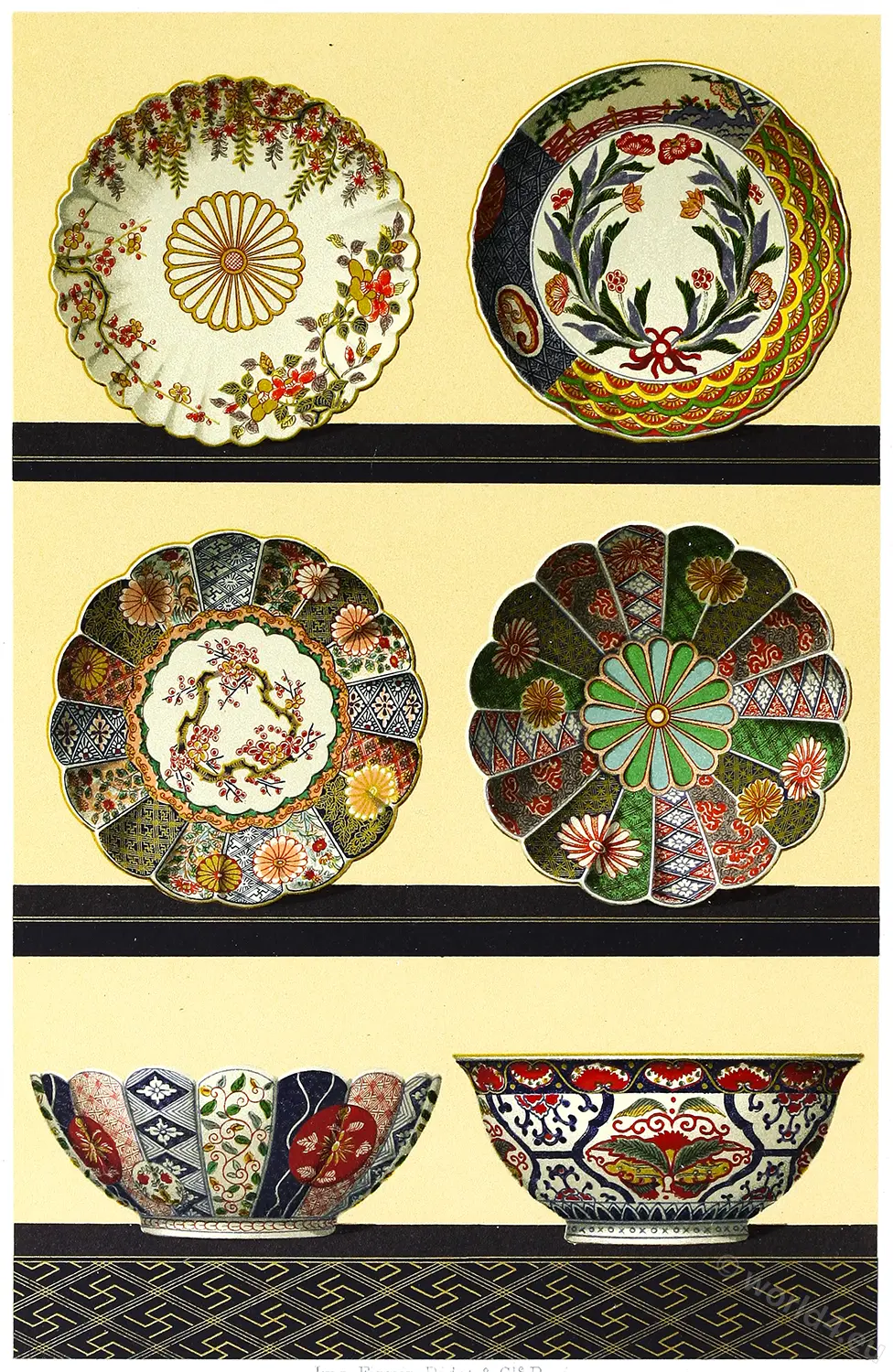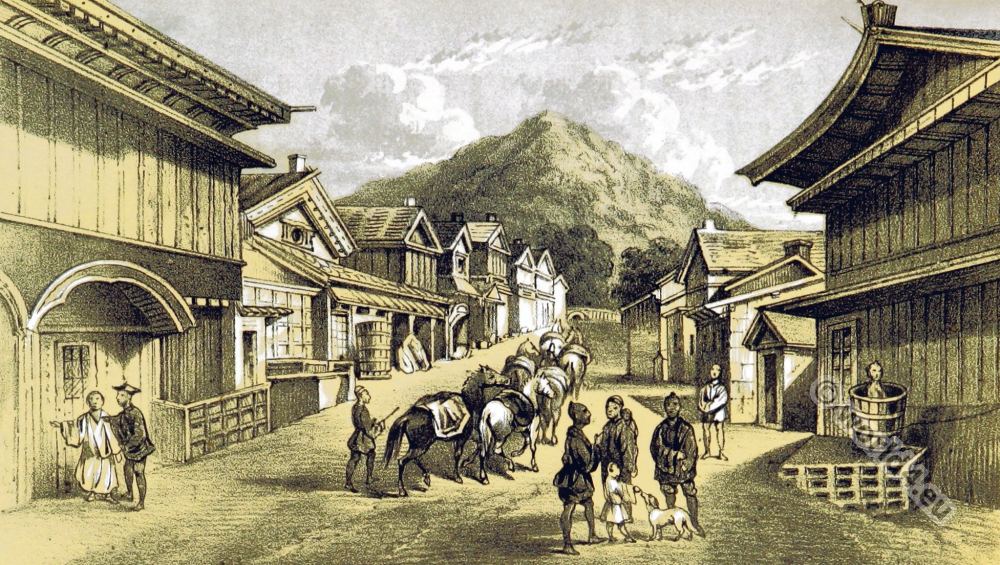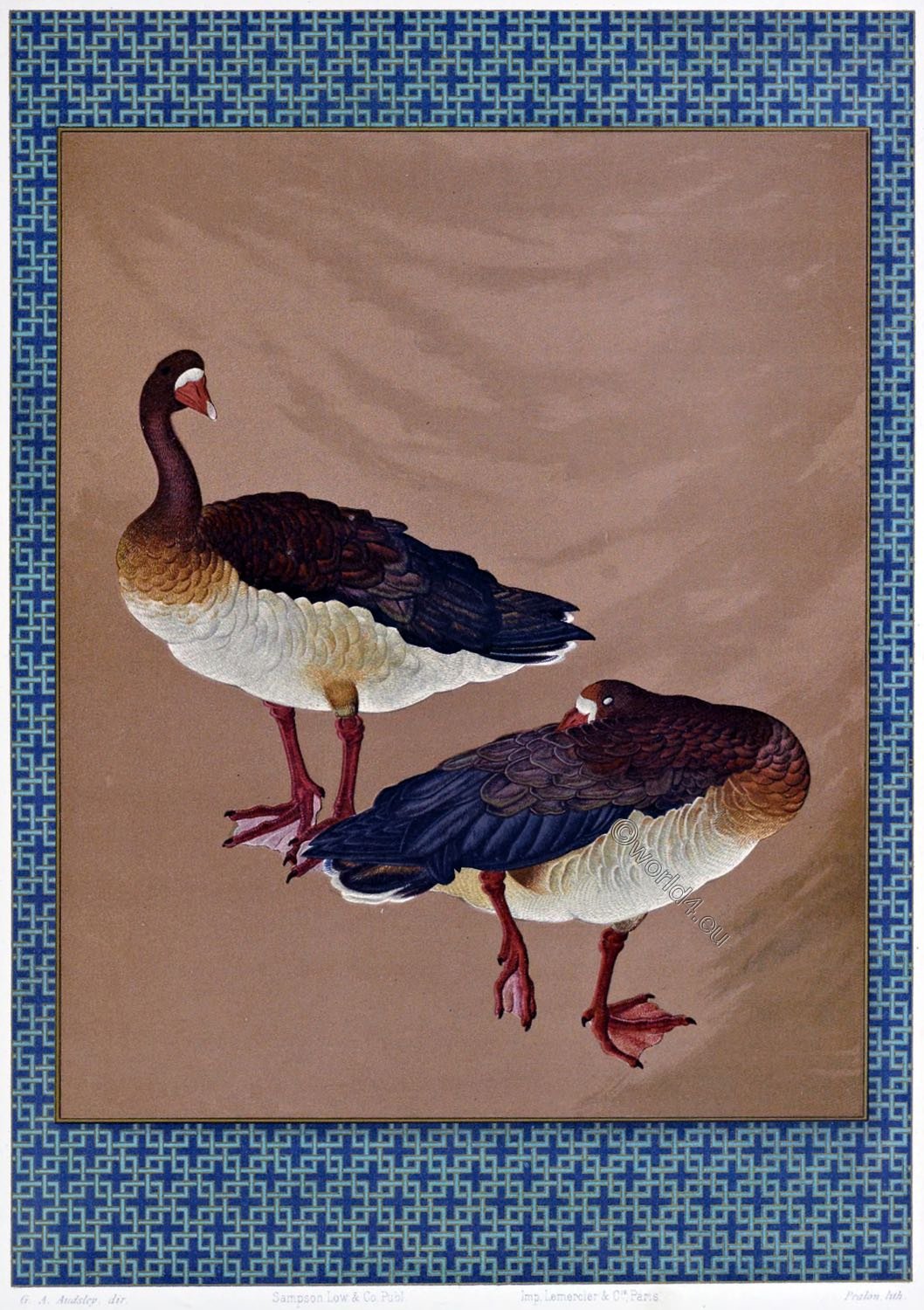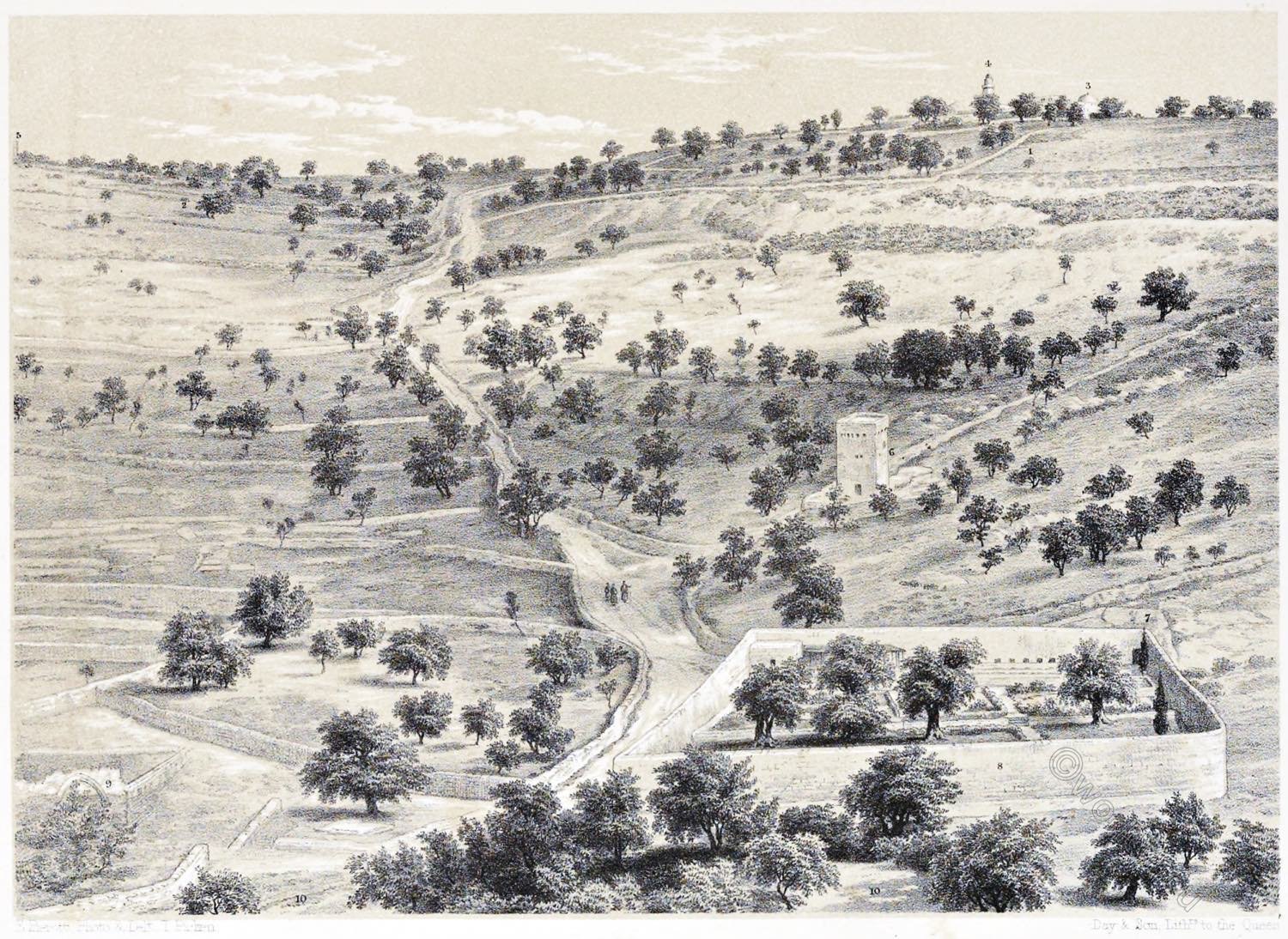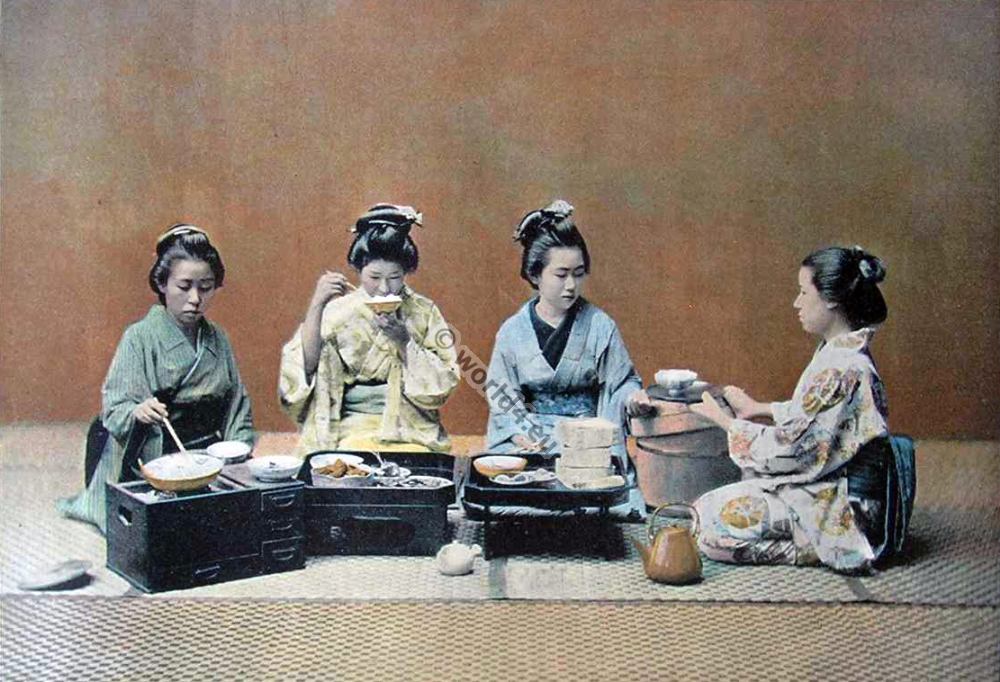The Ginkakuji, also known as the Silver Pavilion, is a Buddhist temple located in Kyoto, Japan. The associated garden, known as the Ginkakuji Garden, is renowned for its beauty and tranquility.
PLATE IX.
GINKAKUJI GARDEN, KIOTO
Supplement to Landscape gardening, by Josiah Conder.
The Regent Yoshimasa, following the example of his predecessor Yoshimitsu, built himself a secluded retreat which he called Ginkakuji, or the Silver Pavilion, and which bore a striking resemblance to the Kinkakuji just described. The landscape-artist, Shoami, is said to have been the designer of the surrounding garden. It bears many traces of the Tea Garden style, which received a great impetus during the rule of Yoshimasa.
A lake containing pine-clad islands and rare water-rocks is the principal feature of the grounds; it flows close up to the silver-plated pavilion, a structure of two stories, and of more modest proportions than the gilded pavilion of Yoshimitsu.
A view of the lake and dwelling, as they now remain, is given in the lower illustration of Plate IX., and the upper illustration represents a portion known as the lotus-lake, thickly overgrown with lotus leaves, and crossed by monolithic granite bridges, with an intervening island of rocks and pine trees. A thickly wooded hill in the background imparts a charming beauty to this view. Other interesting features of this old garden are referred to in the writer’s previous volume on “Landscape Gardening in Japan.”
Ginkakuji, or the Silver Pavilion
Landscape Gardening in Japan by Josiah Conder.
The grounds of Ginkakuji, or the Silver Pavilion were laid out by the artist Shoami, in about the year 1480. It was to this spot that Yoshimasa retired after transferring the reins of active government to his successor. Kinkakuji, *) as designed for his predecessor Yoshimitsu, was copied to some extent in the arrangement of the buildings and landscape.
*) The Golden Pavilion is set in a Japanese strolling garden kaiyū-shiki-teien, lit. a landscape garden in the go-round style.
Though much out of repair, this garden forms even now one of the noted sights of the old capital. It contains an extensive lake, thickly planted’ with lotuses, and backed by a magnificently wooded hill. A cascade, several islands, and numerous granite bridges adorn the grounds.
Considerable care was bestowed by Shoami on the selection and arrangement of the gardenstones, which are of rare and curious shapes, distinguished by characteristic fancy names.
The foreground was originally spread with white sand ornamentally raked in patterns, and there existed a circular sanded plateau, called the Kogetsu-Dai, used for viewing the effect of the moonlight upon the landscape. A bubbling spring of the purest water gushes out in one portion of the grounds.
The surrounding hills and islands are adorned with pine trees and other evergreens of interesting shapes, and a mound towards the West is thickly planted with azaleas and reddening maples.
Plate XXXVI. gives some idea of the arrangement of this garden as originally planned, though the drawing is lacking in correctness of detail. Here also age and neglect have combined to change convention into nature, and almost obliterate the aid of art and artifice.
Some reference must be made to the grounds of the Imperial Palace at Kioto, principally those parts known as the Ike-no-Niwa, or Lake Garden, and the Tsune-goten-Niwa, or Garden of the Tsune-goten. *) The former has a fine lake ornamented with fancy bridges of wood and stone and picturesque water-worn rocks; the banks are adorned with rounded bushes and dwarf pine trees, and higher trees occupy the background. Also worthy of notice are the gardens of the Nijo Castle in Kioto, and the Momoyama-goten in Fushimi near to the Osaka Citadel.
*) Tsune-goten,—the name given to the Mikado’s private chambers in the Kioto palace.
Many of the old castle-towns of the interior possess fine gardens which adorned the Daimios’ provincial palaces, but which are now converted into public parks. Among these may be mentioned the public garden at Kumamoto, and that at Okayama in the province of Bizen, to be afterwards described.
The garden of a part of Prince Shimazu’s residence at Kagoshima,—well-known from photographs,—is interesting as a characteristic example of the severe and aristocratic style of composition, in which a stately simplicity dominates.
A serpentine lake, crossed in one place by a fine slab of hewn granite, supported in the middle on stone trestles, is edged with numerous water-worn boulders, schists, and rocks, between which are planted azaleas and other bushes, water plants, and evergreens, having their foliage cut into spherical shapes. A graceful stone lantern, with umbrella-shaped top, placed in conjunction with a few fine rocks and a trained pine tree, forms a prominent feature on the lake side, just in front of the rooms.
The cascade,—an indispensable feature of lake gardens,—is, in this example, divided from the principal sheet of water by a sanded space, and has its own separate basin, which, together with a handsome rockery and mound backed by enormous rounded evergreens and other hills, makes a handsome composition at the side of the dwelling. One or two quaintly trimmed pollards near the verandah, and some fine pines in the extreme background, are the only large trees in the design.
A pretty garden at Niigata, in the province of Echigo, belonging to a certain Mr. Shirase, is a very fine example. It has a small lake, the banks of which are crowded with rocks, having round bushes and grasses planted between them. On the surrounding areas are pine trees of rare shape, with their foliage conventionally cut into discs in what is called the Tamatsukuri Style. In the background, is a hill with a cascade and rockery, backed by large clumps of spherical bushes.
Fuller descriptions follow of some of the more important of the larger gardens included in the preceding list, the information being partly taken from a publication called the “Fuzoku Gaho.” In some cases the gardens described remain in a state approaching their former splendour, and have been personally visited by the present writer; but the majority have been so broken up that to mention them as existing examples would seriously mislead and disappoint any one wishing to visit them. Their detailed notice, therefore, belongs properly to the historical section of this work.
Source:
- Landscape Gardening in Japan by Josiah Conder (1852-1920); Kengo Ogawa. Tokio: Kelly and Walsh, 1893.
- Supplement to Landscape gardening in Japan by Josiah Conder (1852-1920); Kengo Ogawa. Tokio: Kelly and Walsh, 1893.





